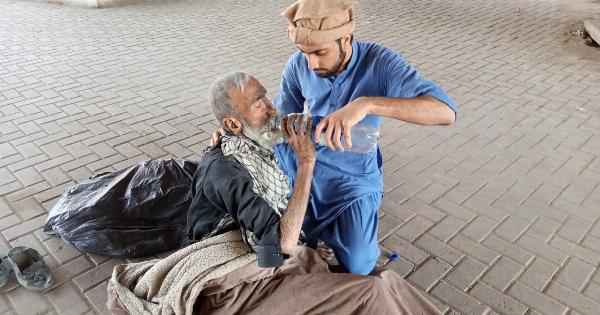Sleep is a vital process needed to maintain homeostasis and repair the damages in the body. During sleep, various physiological processes occur to repair DNA damage, including the repair of DNA lesions.
A DNA lesion refers to any chemical or structural change that affects the integrity of the DNA molecule. These lesions are caused by various exogenous and endogenous factors such as exposure to radiation, chemicals, and oxidative stress. In this article, we will discuss how these DNA lesions are fixed during sleep.
The Different Types of DNA Lesions
There are several types of DNA lesions, but the most common ones are as follows:.
Oxidative Damage
Oxidative damage is a type of damage caused by Reactive Oxygen Species (ROS). ROS is produced during normal cellular metabolism, but its concentration increases when the body is exposed to environmental toxins or extreme stress.
Oxidative damage can cause base modifications like 8-oxoguanine, single-strand breaks, and double-strand breaks.
Alkylation Damage
Alkylation damage refers to the addition of alkyl groups to DNA. This type of damage can be caused by exposure to chemotherapeutic agents like melphalan and temozolomide or environmental toxins like tobacco smoke.
Alkylation damage can lead to base modifications and DNA crosslinks.
Pyrimidine Dimer Formation
Pyrimidine dimers are caused by exposure to UV radiation. This type of damage occurs when two adjacent pyrimidine bases (thymine or cytosine) form covalent bonds, leading to the distortion of the DNA helix.
This type of damage can lead to transcriptional errors and DNA replication errors.
The DNA Repair Pathways
The body has several DNA repair pathways to repair DNA damage. The three main repair pathways are:.
Base Excision Repair (BER)
BER is the primary DNA repair pathway for oxidative damage. It involves the removal of damaged or modified bases and the replacement of the missing bases by DNA polymerase.
This pathway is critical for the repair of single-strand breaks and base modifications like 8-oxoguanine.
Nucleotide Excision Repair (NER)
NER is the main DNA repair pathway for bulky DNA lesions like pyrimidine dimers and adducts. It involves the recognition, excision, and repair of bulky DNA lesions. This pathway is essential for maintaining genome stability and preventing cancer.
Double-Strand Break Repair (DSBR)
DSBR is the main repair pathway for double-strand breaks. This pathway involves the recognition of DNA damage, the recruitment of repair factors, and the repair of both strands.
DSBR is crucial for preventing genomic instability and maintaining cell viability.
The Role of Sleep in DNA Repair
Sleep is essential for the repair of DNA damage. During sleep, the body’s physiological processes are focused on repairing the damages caused during wakefulness.
Several studies have shown that DNA repair pathways are more active during sleep than during wakefulness.
BER Pathway
Studies have shown that the BER pathway is more active during sleep than during wakefulness.
One study, for example, showed that the activity of DNA glycosylase (an enzyme involved in BER) was higher during sleep in both humans and mice than during wakefulness. Other studies have also shown that the expression and activity of other BER enzymes like APE1 and X-ray repair cross-complementing protein 1 (XRCC1) are higher during sleep than during wakefulness.
NER Pathway
The NER pathway is also more active during sleep than during wakefulness. One study showed that the expression of XPC (a protein involved in NER) was higher during sleep in mice than during wakefulness.
Another study showed that the expression of another protein involved in NER, Cockayne syndrome group B (CSB), was higher during sleep in humans than during wakefulness. These findings suggest that the NER pathway is more active during sleep, which may help prevent cancer and maintain genome stability.
DSBR Pathway
The DSBR pathway is also more active during sleep than during wakefulness. One study showed that the expression of Rad51 (a protein involved in DSBR) was higher during sleep in rats than during wakefulness.
Another study showed that the expression of another DSBR protein, Ku70, was higher during sleep in humans than during wakefulness. These findings suggest that the DSBR pathway is more active during sleep, which may help prevent genomic instability and maintain cell viability.
Conclusion
Sleep is a crucial process needed to maintain overall health and repair damages in the body. The repair of DNA lesions is one of the essential physiological processes that occur during sleep.
The BER, NER, and DSBR pathways are more active during sleep than during wakefulness, which suggests that sleep is critical for maintaining genome stability, preventing cancer, and maintaining cell viability.






























